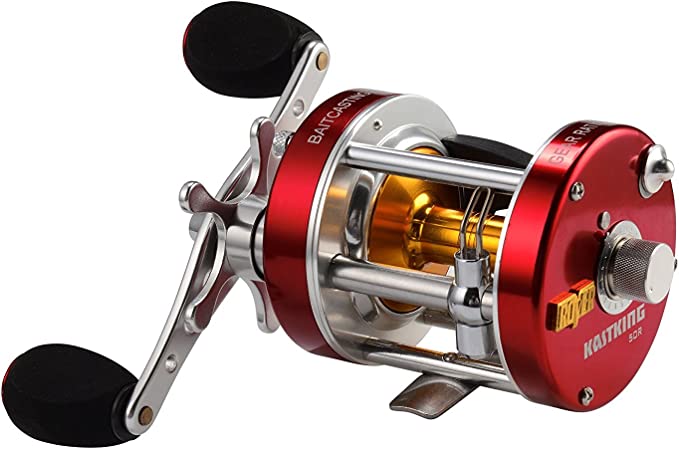Why You Need a "Fat Girl": The Tactical Return of KastKing Progressive Glass Rods
Update on Dec. 9, 2025, 2:36 p.m.
In the high-speed race for the lightest, stiffest, most sensitive graphite rods, the fishing world left something behind: The Soul of the Bend.
Enter the KastKing Progressive Glass Fishing Rod. Or, as reviewer Alice Goddard affectionately calls it, the “Fat Girl.” Yes, it’s thicker than your graphite stick. Yes, it’s heavier. But if you are losing fish on crankbaits, chatterbaits, or while trolling, this $30 “retro” rod might be the most advanced piece of gear you can add to your arsenal.
Here is the science behind why “Glass is Back.”

The Physics of Forgiveness: Why Graphite Fails
Graphite (Carbon Fiber) is amazing for feeling a worm bite at 30 feet. But it has a fatal flaw for moving baits: It reacts too fast.
When a bass strikes a moving crankbait with treble hooks:
1. Graphite Rod: You feel the bite instantly -> You set the hook -> The stiff rod rips the lure out of the fish’s mouth before it fully closes.
2. Glass Rod: The fish strikes -> The soft, phenolic glass tip flexes deeply -> The fish turns with the bait -> The rod loads up automatically.
The KastKing Progressive Glass features a true Parabolic Action. It bends deep into the blank. This “delay” is not a defect; it is a tactical advantage. It acts as a shock absorber, keeping tension on the line without tearing the hooks out of the fish’s soft mouth during a violent head shake.
Phenolic Glass: Not Your Grandpa’s Fiberglass
Old fiberglass rods were heavy noodles. KastKing uses 100% Phenolic Glass. Phenolic resin is a high-strength polymer that binds the glass fibers.
* The Result: A rod that retains the buttery, flexible feel of glass but with enough backbone to actually turn a fish.
* The Durability: Unlike graphite, which can shatter from a microscopic nick, phenolic glass is incredibly tough. As reviewer Chase noted, he tosses “5 ounce spoons” with the surf model without fear.

The “Treble Hook” Specialist
If you fish lures with Treble Hooks (Crankbaits, Jerkbaits, Topwater), you need a glass rod. * The KastKing 7‘0” Medium Action model is the sweet spot. * It allows the fish to “eat” the bait. * It keeps the fish pinned during the fight. A stiff rod creates slack when a fish jumps; a glass rod stays bent, maintaining tension.
Verdict: The Best $30 Upgrade
You don’t need a glass rod for everything. But for crankbait fishing, the KastKing Progressive Glass outperforms graphite rods costing $200. It’s heavy, it’s old-school, and it catches fish that graphite rods lose.





















